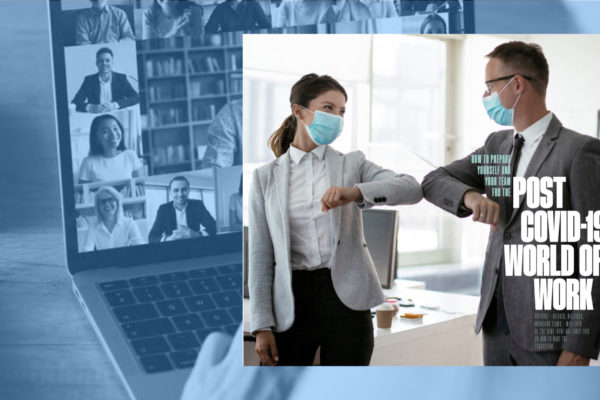Making the new normal work for media: it’s not about remote, it’s about hybrid
With many countries beginning to take tentative steps out of coronavirus lockdown, the time for the ‘new normal’ is now. But what exactly might the redefined working environment look like in a post-lockdown world? And how can we ensure that the office landscape continues to support successful outcomes, particularly in the media sector where creativity and collaboration are key? The 2021 Innovation in Media Report dedicates an entire chapter to these very questions, providing data, insights, and pragmatic tips on how to prepare yourself and your team for the post Covid-19 world of work.
Evolution not Revolution
The key thing to remember about flexible and remote working, is that the move towards these practices was already well underway before the pandemic, it’s just that the past twelve months has accelerated this change.
“We spent the last 20 years talking about disruption,” says Lucy Keung in her late 2020 book, ‘The Transformation Manifesto’. “Now the word is ‘acceleration’. The coronavirus crisis has accelerated structural shifts that have been underway for decades…. Changes that were part of companies’ mid- term planning are now showing up in forecasts for the next 12 months.”
And in a way this is unsurprising. The revolutionary nature of the coronavirus pandemic has speeded up the evolutionary process towards more remote working, because it has shown that the technology is now in place to facilitate it. In other words, we no longer need to be tentative about taking these steps, because we know that we can make them work. Necessity has fuelled innovation.
Hybrid not Remote
But just as the onset of national lockdowns forced us to rethink our traditional working habits, so too their easing looks set to signal the end of enforced remote working, and a move towards a voluntary hybrid model:
‘While lockdowns made working from home five days a week unavoidable, it cannot stay that way, especially in creative organisations like media companies,’ states the 2021 Innovation in Media Report, Edited by John Wilpers & Juan Señor of Innovation Media Consulting. ‘Human beings are social animals, and journalism is a social process, both in the gathering of the information and the creative process of crafting the presentation of that information. Ditto sales and marketing.’
‘While some workers have blossomed working from home, a recent survey also uncovered a worrisome decline in mental health across all industries, seniority levels, and demographics. Before the pandemic, 62% of employees reported positive mental health. By late 2020, that number had dropped to just 28%, according to a report by the Martec Group, a global strategic intelligence and market research solutions company. Job satisfaction and job motivation had also fallen – job satisfaction from 57% to 32% and job motivation from 56% to 36%.’
So while the traditional nine-five, Monday through Friday working week looks set to fade into the history books, the need for collaborative workspaces remains – and it will be what you do with them that counts…

Physical & Psychological Changes
Within the report, we find considerations of what new media workspaces might look like, as well as practical advice on how to make hybrid physical-remote models work, such as:
- Transitioning offices from an assembly of workstations into more open-space collaboration hubs.
- Staggering the working week to bring in different people on different days.
- Implementing departmental pods and touchless technologies, to allow safer access to shared office space during potential future waves and future pandemics.
- New team management techniques like using surveys to check on employee temperature, or playing games online to replace physical world socials.
- Specific tech tools for different aspects of remote working, such as those used for team communications, video conferencing, file collaboration, and time tracking.
- New approaches to psychological health in (and out) of the workplace, and how to forge a greater understanding of individual employee needs.
Diversifying Diversification
Of course, one of the more positive aspects to come out of the pandemic (if there is such a thing) is the opportunity that it has given us to press the pause button slightly, gain a new perspective, and re-examine our wider workplace practices. Increasing diversity and inclusion for example is an objective that has longsince been on the agenda of many a media company, and as we reassess traditional working patterns we now also have an opportunity to ‘build back better’ in this area too.
Shona Pinnock, who is responsible for all of Meredith’s diversity and inclusion programmes, and provides a 5-step blueprint for change in the Innovation report, says:
“In our company, we are about 77% white and about 23% ethnically diverse. So, to move the needle in terms of what that looks like and be representative of the US population, which is about 60% white, that will take time. But in terms of the inclusion and equity part, those things can happen immediately. We can create practices that are more inclusive today. You have to keep working. There are many things that happen that knock you down, so resilience is a big part of this journey.”
To access the full 20201 Innovation in Media Report, which in addition to the post-Covid workplace also analyses topics such as recruitment, direct-to-consumer, podcasting, sustainability, monetisation and more, click here.










